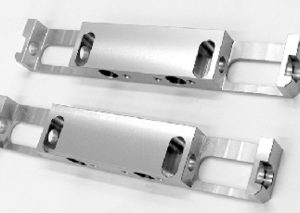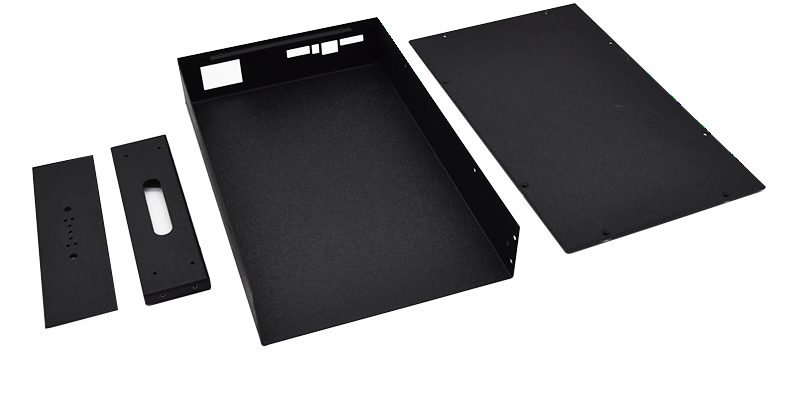
There are a wide variety of sheet metal parts.
The following are some common classifications:
**I. Classification by Shape**
1. Flat – plate – type sheet metal parts – Characteristics: Their shapes are relatively simple, basically flat, and of uniform thickness. For example, some simple thin metal sheets, protective cover plates of equipment, etc. When processing these sheet metal parts, the focus is mainly on operations such as flat – surface cutting and bending, and relatively high precision is required, especially in terms of size and flatness.
2. Bent – type sheet metal parts – Characteristics: They have bent shapes with different bending angles and radii. Common ones include U – shaped grooves, V – shaped bent parts, etc. During the processing, it is necessary to precisely control the bending angle, radius, and the position of the bending line to ensure that the product meets the design requirements. Bent – type sheet metal parts are widely used in various frame structures, side parts of equipment housings, etc.
3. Complex – shape sheet metal parts – Characteristics: Their shapes are irregular and may include multiple bends, twists, and combinations of special geometric shapes. For example, some parts of automobile bodies, housings of complex industrial equipment, etc. The processing of this type of sheet metal parts is relatively difficult, and usually advanced CNC machining equipment is required. In the design and manufacturing process, factors such as material deformation and stress distribution need to be considered.
**II. Classification by Use**
1. Structural – type sheet metal parts – Use: They are mainly used to construct the frame structures of various machinery, equipment, buildings, etc., playing a role of support and connection. For example, light – gauge steel keels in buildings, frames of mechanical equipment, etc. This type of sheet metal parts needs to have relatively high strength and stiffness. In the selection of materials, high – strength metal materials such as carbon steel and stainless steel are usually chosen, and during the processing, the dimensional accuracy and the reliability of the connection parts need to be ensured.
2. Protective – type sheet metal parts – Use: They are used to protect equipment, personnel, or prevent the influence of the external environment on the internal structure. For example, housings of electrical equipment, boxes of distribution boxes, etc. In addition to having a certain strength to resist external impact forces, protective – type sheet metal parts also need to consider their sealing properties (preventing dust, moisture, etc. from entering the interior) and electromagnetic shielding properties (in electronic equipment).
3. Decorative – type sheet metal parts – Use: They are mainly used to beautify and decorate the appearance of objects. For example, some metal carved plates for building decoration, exterior decorative parts of automobiles, etc. In the design of this type of sheet metal parts, more attention is paid to the appearance shape and surface treatment, and special textures, colors, or surface coating processes may be adopted to enhance their decorativeness.
**III. Classification by Material**
1. Carbon – steel sheet metal parts – Characteristics: With carbon as the main alloying element, they have a relatively low cost and relatively good strength and toughness. Their properties vary according to the carbon content. For example, low – carbon – steel sheet metal parts (such as Q235) are easy to be processed and formed, and are often used for some structural parts and housings with not particularly high strength requirements; medium – carbon steel (such as 45# steel) can obtain relatively high strength and hardness after appropriate heat treatment, and is suitable for some sheet metal structures that need to bear relatively large loads.
2. Stainless – steel sheet metal parts – Characteristics: They have good corrosion resistance, antioxidant properties, and aesthetics. Common types of stainless steel include austenitic stainless steel (such as 304, 316), which are suitable for food processing equipment, medical equipment, and other occasions with high requirements for hygiene and corrosion resistance; martensitic stainless steel (such as 410) has relatively high strength and hardness and can be used to manufacture sheet metal products such as cutting tools and valves that require wear resistance and a certain degree of corrosion resistance.
3. Aluminum and aluminum – alloy sheet metal parts – Characteristics: They have a small density, are light in weight, and have good thermal conductivity, electrical conductivity, and processability. They are often used in fields such as aerospace and automobiles to reduce the structural weight. For example, 6061 aluminum alloy has medium strength, good processability, and corrosion resistance, and is often used to manufacture parts of airplanes, engine hoods of automobiles, etc.






